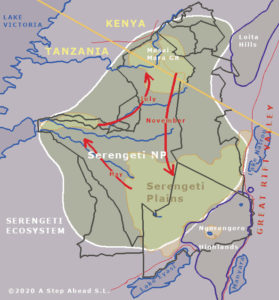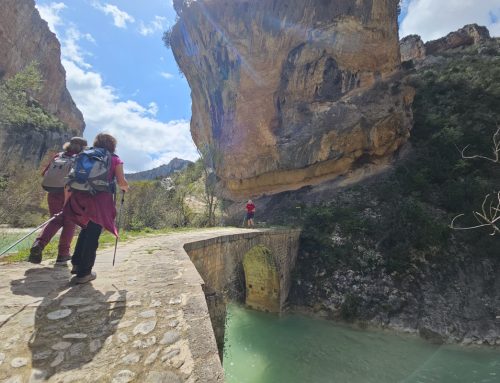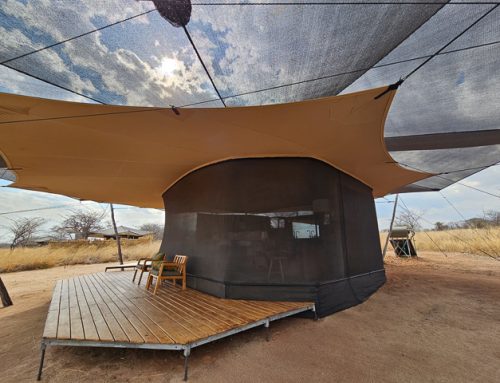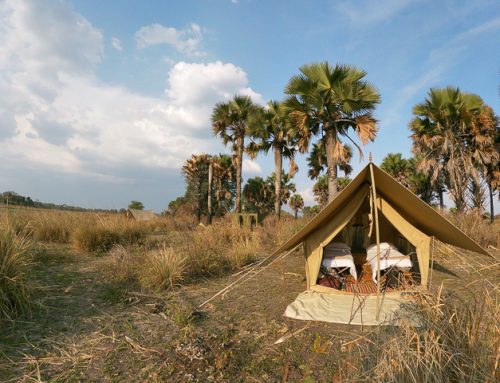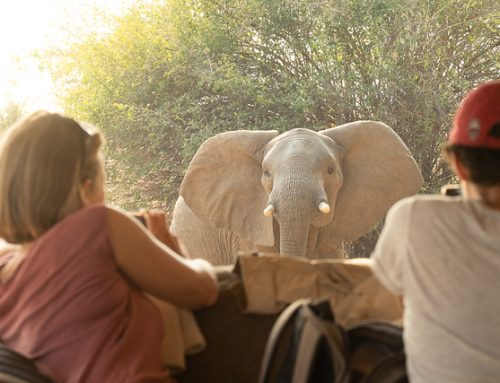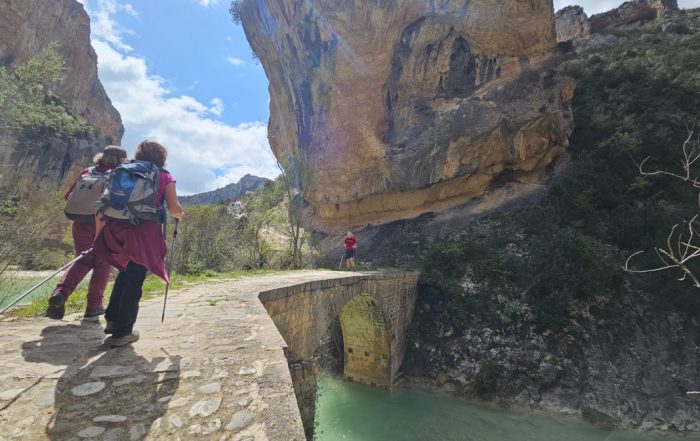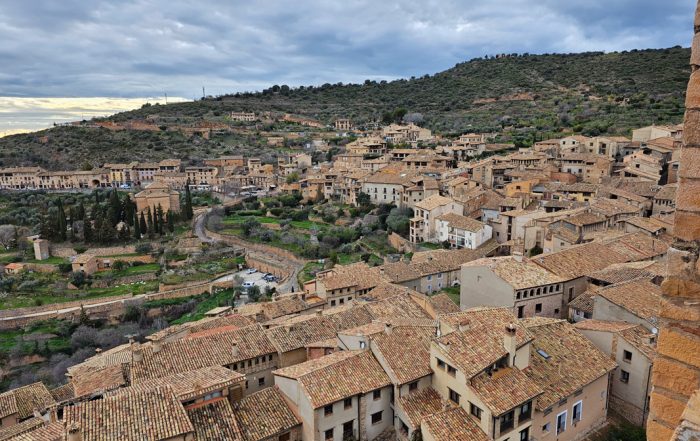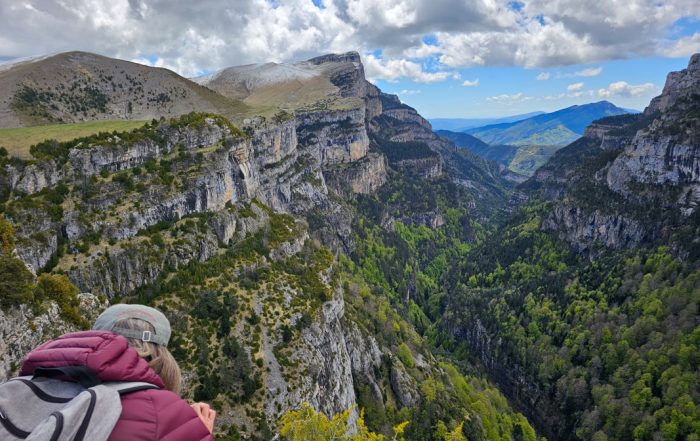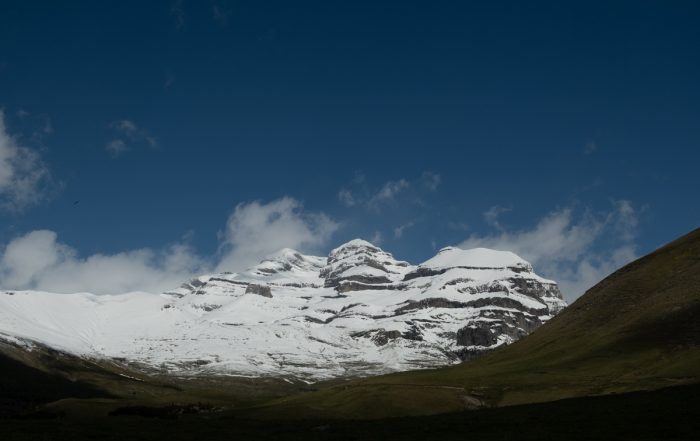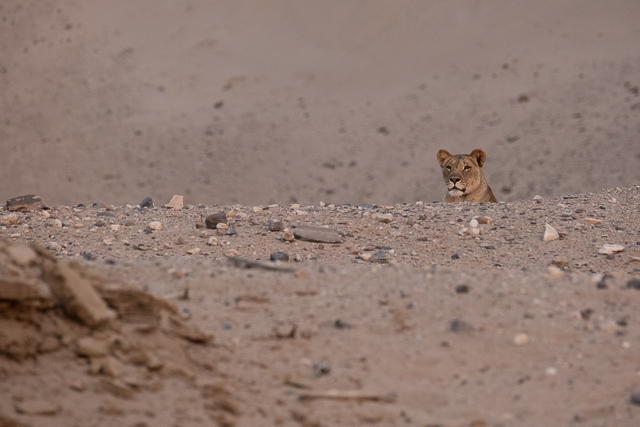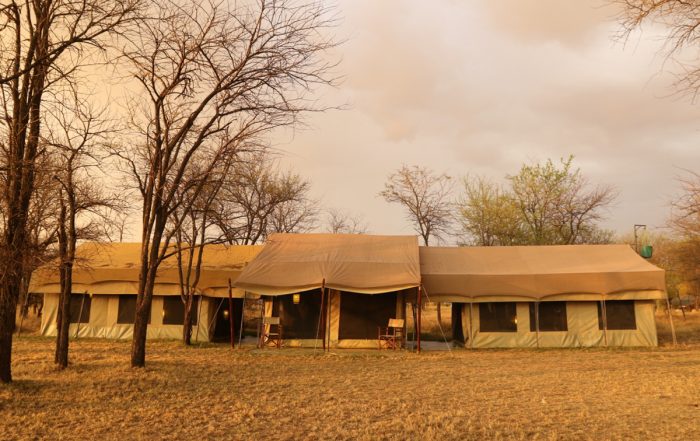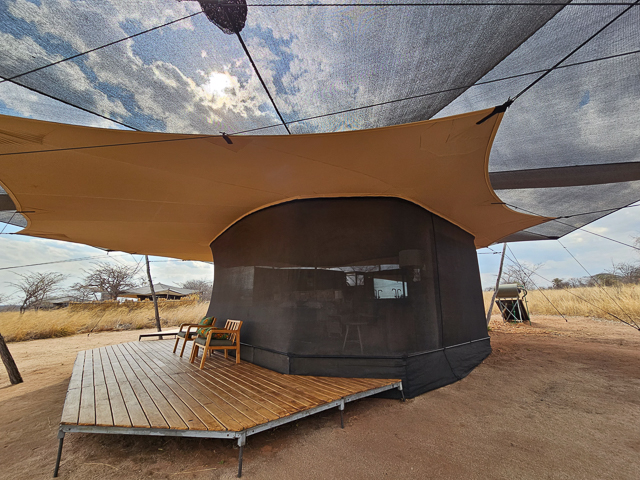It is not easy to describe to someone who has not been what it is like to be in the midst of one of the greatest wildlife migrations on Earth.
One obvious aspect is the sight of so many animals. However, the sound of this multitude is essential too; the lowing and grunting, the sounds of the galloping hooves, and the screams of chaos at times. The smells, the breeze, and sense of vastness, of space. The sensation that anywhere, somewhere nearby, there is likely to be a predator watching. The combination is exhilarating.
Nowhere on land really matches the Serengeti ecosystem for this experience. The Serengeti is renowned for the Great Migration. In fact, mention the Serengeti, and the word migration immediately comes to mind. It is one of the most remarkable wildlife havens on Earth.
Serengeti Ecosystem
Here, about two million large ungulates move in search of the best grasses or abundant water throughout the year. The area wherein these animals migrate is vast. It straddles two countries and includes one national park, one conservation area, four game reserves, several conservancies and a game controlled area, and covers about 30,000 km2 (19,000 mi2). That is larger than the US state of Maryland. It includes areas of savanna, woodland, flat plains, and areas with rolling hills or granite outcrops.
The south-eastern part of the ecosystem has the lowest rainfall and is the area´s namesake – the Serengeti Plains (marked on the map). This is a dry savanna, where the annual rainfall can be less than 550mm (20 in). The Plains in the dry season is virtually a desert, populated by only the most hardy and water efficient animals – ostriches, Grant´s gazelle and the occasional pair of jackals.
If the animals did not migrate, there would never be wildebeest, zebra or Thomson´s gazelle in this area, and the population in the whole ecosystem would be significantly less than the estimated 2 million that are there today. The ecosystem can only support so many animals because they move.
During the dry season, from June to October, the herds are far way, in an area to the north that straddles the Kenya – Tanzania border with twice the rainfall (1240mm / 50 in per annum). It is not unusual to have afternoon showers or storms there even at this time of year.
It is easy to understand why they may move north from the arid Serengeti Plains. But why, usually in November when the rains begin, would they leave the lush north and head back to the open Plains in the south-east? Perhaps it is due to the richer soil mineral content, but how would they know? Perhaps increasing rainfall in the north results in longer grasses that are less palatable, or there is more cover for predators? To my knowledge what motivates them is still a mystery.
Whatever the reason, the fact is they do, and by the time they arrive, the dry Plains have usually become a lush grassland.
Clearly, we should be in the right part of the Serengeti ecosystem at the right time in order to see the Great Migration. When and which area should we visit?
The north in the dry season
Many enquirers are told they should go during the migration season, but when is that?
I think the term migration season has arisen because this phenomenal spectacle has become known through the excellent marketing efforts of the Kenyan tourism industry. They call the migration season the height of the dry season, when the herds are in the lush meadows in far northern part of the Serengeti National Park (in Tanzania) and the Masai Mara Game Reserve and adjacent conservancies (in Kenya), which is from August until October. This area is divided from west to east by the border between the two countries, and from north to south by the roaring Mara River.
In my opinion this season should not be called the migration season because the herds move throughout the year. Furthermore, the times of year when they are least predictable and on the move the most are not during the so-called migration season, but in June and July, and again in November.
Anyway, in mid July, August and on and off until October is when the famous river crossings occur. Wildebeest and zebra gather along the banks of the roaring Mara River, and eventually one leaps in followed by the rest. Lines of these animals swim the raging torrent desperate to reach the other side, while crocodiles arrive hoping to pull one down. It is truly one of the great wildlife spectacles on Earth. Here are links to two videos I took of river crossings Wildebeest crossing the Mara River and Wildebeest attacked by crocodile, so that you get an idea of the noise and chaos.
A river crossing is not the only amazing sight to see in the Serengeti, and its popularity has meant the experience can become overwhelmed by racing safari vehicles, traffic jams and shouting spectators.
The Plains in green season
Because of this I think my favourite time of year to see the Migration is during the period when they are in the Plains, in the south of the ecosystem, between December and April.
If it is dry they will be found moving in long lines search of water or into the woodland. Normally it is green and they are spread out. That is when I am most impressed, because it is possible to drive for an hour or more through animals lowing and braying, and scattered everywhere. The wildebeest tend to give birth in February, so there are lots of calves around then and in March.
The West in the rutting season
The craziest time to witness the migration is in May, when the rut is in full spate. It can be hard to find them then, as they are often on the move.
Once we were camped in some kopjes (rocky outcrops) at the western edge of the Plains. The grasses were tall, and there we had only seen resident game, such as buffalo, giraffe, Defassa waterbuck, impala, warthog, and a pride of lions, that were ensconced in the rocks behind camp. We were reminded of their presence because they were roaring every night!
In the middle of the second night we heard what sounded like millions of frogs croaking. As the night progressed the sound became louder. Eventually we could hear the lows and grunts and stamping of hooves indicative of gnus on the move. We had breakfast outside that morning, and had to shout to each other because the wildebeest were so noisy. I will never forget that breakfast! The combination of the crescendo of wildebeest and the knowledge that the lions were in the rocks behind us was magical.
Seasonality
The migration is dependent on rainfall, grass and other factors. Some years are unusually dry, and the herds spend most of the year in the far north. At times they have arrived in the far north as early as June, and occasionally do not arrive until mid-August. However that is unusual, and normally we can be in the right place at the right time, moving around the Serengeti throughout the year, like the ungulates and predators that follow them.
If you ever get the opportunity, join us. If you have ever been lucky enough to visit this remarkable place, I am sure that you share my enthusiasm.
Justin


